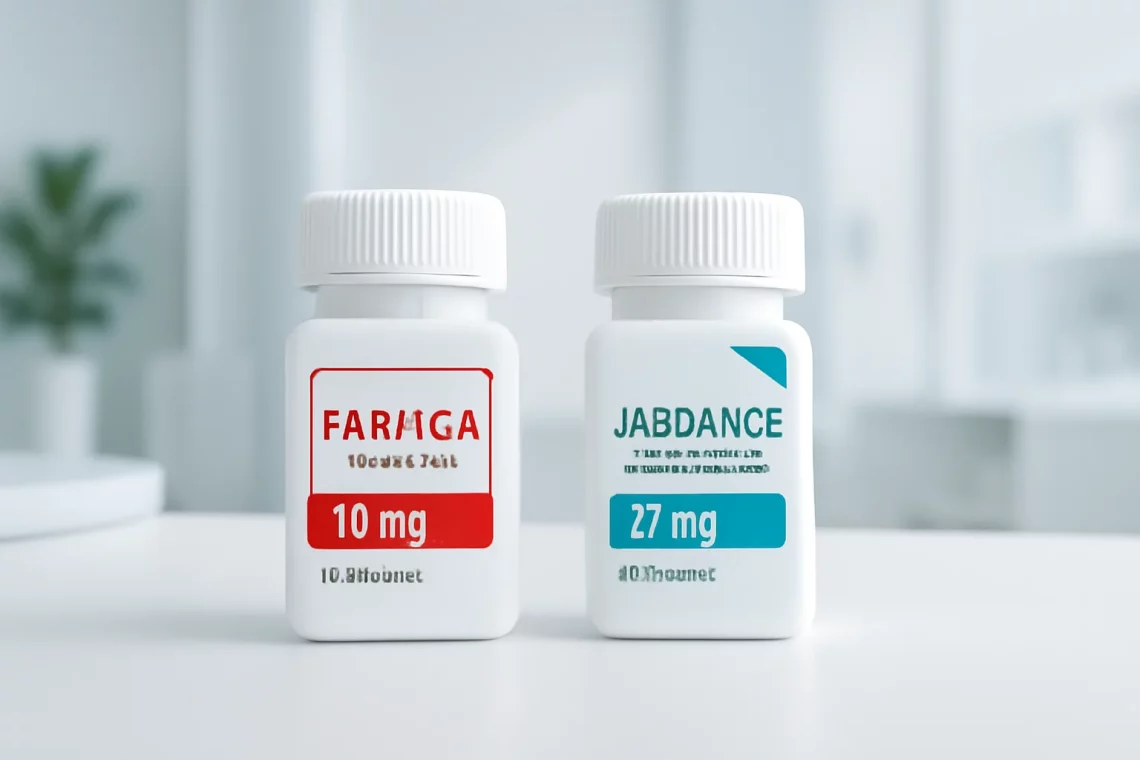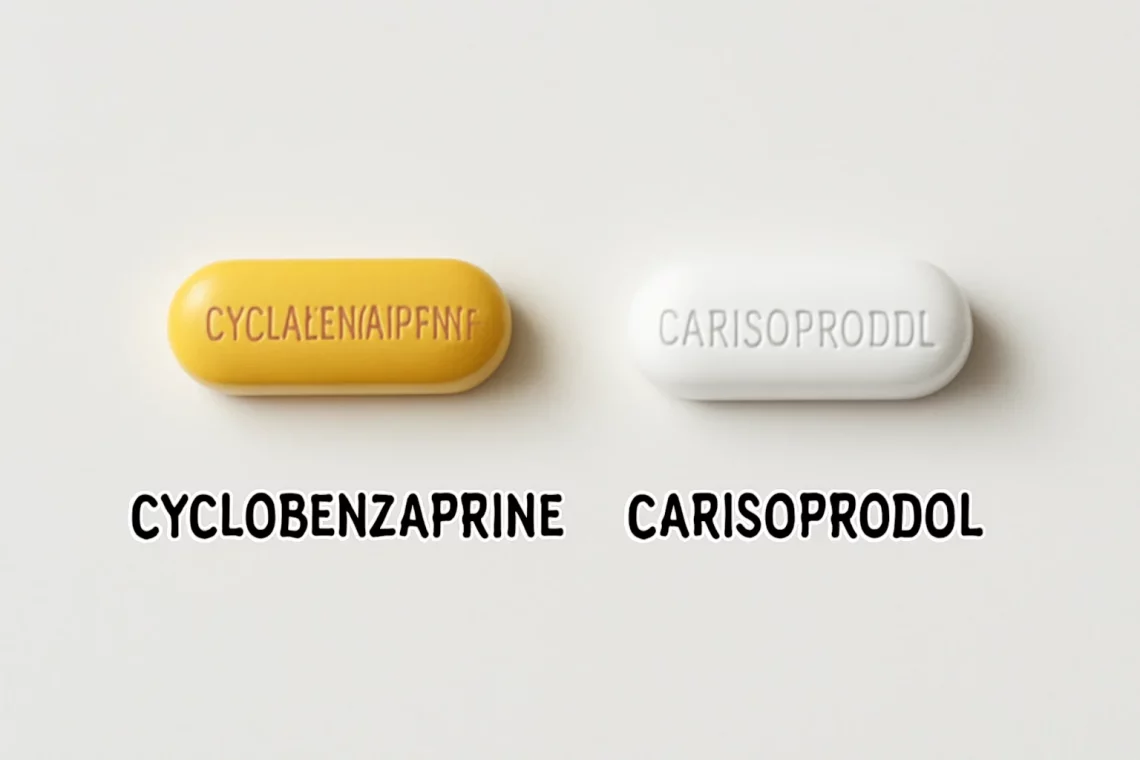-
Naltrexone vs Contrave: Understanding the Key Differences and Benefits
When it comes to weight management and addiction treatment, Naltrexone and Contrave are two terms that often come up in discussions among healthcare professionals and patients alike. As the prevalence of obesity and substance use disorders continues to rise, understanding the medications available for these conditions has never been more critical. Both Naltrexone and Contrave have distinct mechanisms of action, indications, and side effect profiles, making them suitable for different patient populations. This article aims to demystify these medications, shedding light on their uses, benefits, and potential drawbacks. Naltrexone is primarily known as an opioid receptor antagonist, often prescribed to help individuals overcome addiction to opioids or alcohol. By blocking…
-
Farxiga vs Jardiance: A Comprehensive Comparison of Diabetes Medications
In recent years, the landscape of diabetes management has evolved significantly, with new medications emerging to help patients control their blood sugar levels more effectively. Two prominent medications in this arena are Farxiga and Jardiance, both of which belong to a class of drugs known as SGLT2 inhibitors. These medications have gained attention for their ability to lower glucose levels and offer additional benefits, such as weight loss and cardiovascular protection. With diabetes being a chronic condition that affects millions of people worldwide, understanding the differences and similarities between these two medications is crucial for patients and healthcare providers alike. As more individuals seek information on how to manage their…
-
Cyclobenzaprine vs Chlorzoxazone: Key Differences and Uses Explained
Cyclobenzaprine and chlorzoxazone are both medications commonly used to treat muscle spasms and discomfort. Although they serve similar purposes, these two drugs possess distinct properties, mechanisms of action, and side effects profiles. Understanding the nuances between cyclobenzaprine and chlorzoxazone can empower patients and healthcare providers to make informed decisions regarding treatment options. Muscle spasms can arise from various conditions, including injuries, overuse, or underlying medical issues. The sensation of tightness, pain, or restricted movement can significantly impact daily life, leading individuals to seek relief through medication. While both cyclobenzaprine and chlorzoxazone are classified as muscle relaxants, they differ in their chemical structure and how they interact with the nervous system.…
-
Cyclobenzaprine vs Carisoprodol: Which Muscle Relaxant is Better?
Cyclobenzaprine and Carisoprodol are two medications commonly prescribed for the treatment of muscle spasms and discomfort associated with musculoskeletal conditions. Both belong to a class of drugs known as muscle relaxants, which work by affecting the central nervous system to alleviate pain and improve mobility. While they share some similarities in their therapeutic use, they also have distinct differences in terms of mechanism of action, side effects, and duration of use. In an era where muscle-related issues are increasingly prevalent due to sedentary lifestyles and physical stressors, understanding these medications can empower patients and healthcare providers alike. Muscle relaxants like cyclobenzaprine and carisoprodol have become important components in managing pain…
-
Lexapro vs Remeron: A Comprehensive Comparison of Antidepressants
The choice between medications for mental health can be daunting, especially when it comes to antidepressants. Two commonly prescribed options are Lexapro and Remeron. Both of these medications have distinct mechanisms of action, benefits, and side effects, making them suitable for different types of patients and conditions. Understanding the nuances of these drugs is essential not only for patients but also for healthcare providers who aim to offer personalized treatment plans. Antidepressants like Lexapro (escitalopram) and Remeron (mirtazapine) are often used to treat major depressive disorder and anxiety disorders. Each medication interacts with the brain’s neurotransmitters in different ways, influencing mood, sleep, and appetite. As mental health awareness increases, the…
-
Gemtesa vs VESIcare: Which Treatment is Right for You?
The world of medication is vast and complex, offering a variety of options for managing health conditions. Among these, Gemtesa and VESIcare have emerged as notable choices for individuals experiencing specific health issues. As patients and healthcare providers navigate the plethora of treatment options, understanding the distinctions, benefits, and potential drawbacks of each medication becomes paramount. Both Gemtesa and VESIcare target similar symptoms, particularly those related to overactive bladder, which can significantly impact one’s quality of life. Overactive bladder is characterized by a sudden and uncontrollable urge to urinate, often accompanied by frequent urination and, in some cases, incontinence. The search for effective relief can lead individuals to explore various…
-
Viagra vs Vardenafil: Which ED Treatment is Right for You?
Erectile dysfunction (ED) is a common condition that affects men of all ages, impacting not only physical intimacy but also emotional well-being and relationships. For many, this challenge can lead to feelings of embarrassment or inadequacy. Fortunately, advances in medical science have led to the development of effective treatments that can help restore sexual function and confidence. Among these treatments, Viagra and Vardenafil have emerged as two of the most popular options. Both medications belong to a class of drugs known as phosphodiesterase type 5 (PDE5) inhibitors, which work by enhancing blood flow to the penis and facilitating erections when sexually stimulated. However, despite their similar mechanisms, there are key…
-
Lexapro vs Zoloft: Choosing the Right Antidepressant for You
Depression and anxiety disorders are prevalent mental health issues that affect millions of people worldwide. As awareness of these conditions grows, so does the search for effective treatment options. Among the various pharmacological interventions available, selective serotonin reuptake inhibitors (SSRIs) are often prescribed due to their efficacy and relatively favorable side effect profiles. Two commonly prescribed SSRIs are Lexapro and Zoloft. While both medications are designed to alleviate symptoms of depression and anxiety, they differ in several key areas, including their mechanisms of action, side effects, and overall effectiveness. Understanding these differences can help individuals and healthcare providers make informed decisions regarding treatment options. This article delves into the characteristics,…
-
Nurtec vs Emgality: A Comprehensive Comparison of Migraine Treatments
Migraine is a debilitating condition that affects millions of individuals worldwide, often leading to significant disruptions in daily life. As awareness of migraine’s impact grows, so does the demand for effective treatments. Two medications that have gained attention in recent years are Nurtec and Emgality. Both options are designed to assist those suffering from migraines, but they operate through different mechanisms and have unique properties. Understanding the nuances between these two medications can empower patients to make informed choices about their treatment plans. Factors such as onset of relief, duration of action, side effects, and the frequency of administration play a crucial role in determining which medication may be more…
-
Meloxicam vs Mobic: Understanding Their Differences and Uses
Meloxicam and Mobic are terms often encountered in discussions surrounding pain management and the treatment of inflammatory conditions. These medications belong to a class known as nonsteroidal anti-inflammatory drugs (NSAIDs), which are widely used to alleviate pain, reduce inflammation, and lower fever. Their popularity stems from their effectiveness and relatively favorable safety profiles when used appropriately. However, with the increasing availability of various NSAIDs, it can be challenging to discern the differences and similarities between these medications, particularly for patients seeking relief from chronic pain or inflammatory conditions. Understanding the mechanisms of action, potential side effects, and pharmacological properties of Meloxicam and Mobic can empower patients to make informed decisions…







































